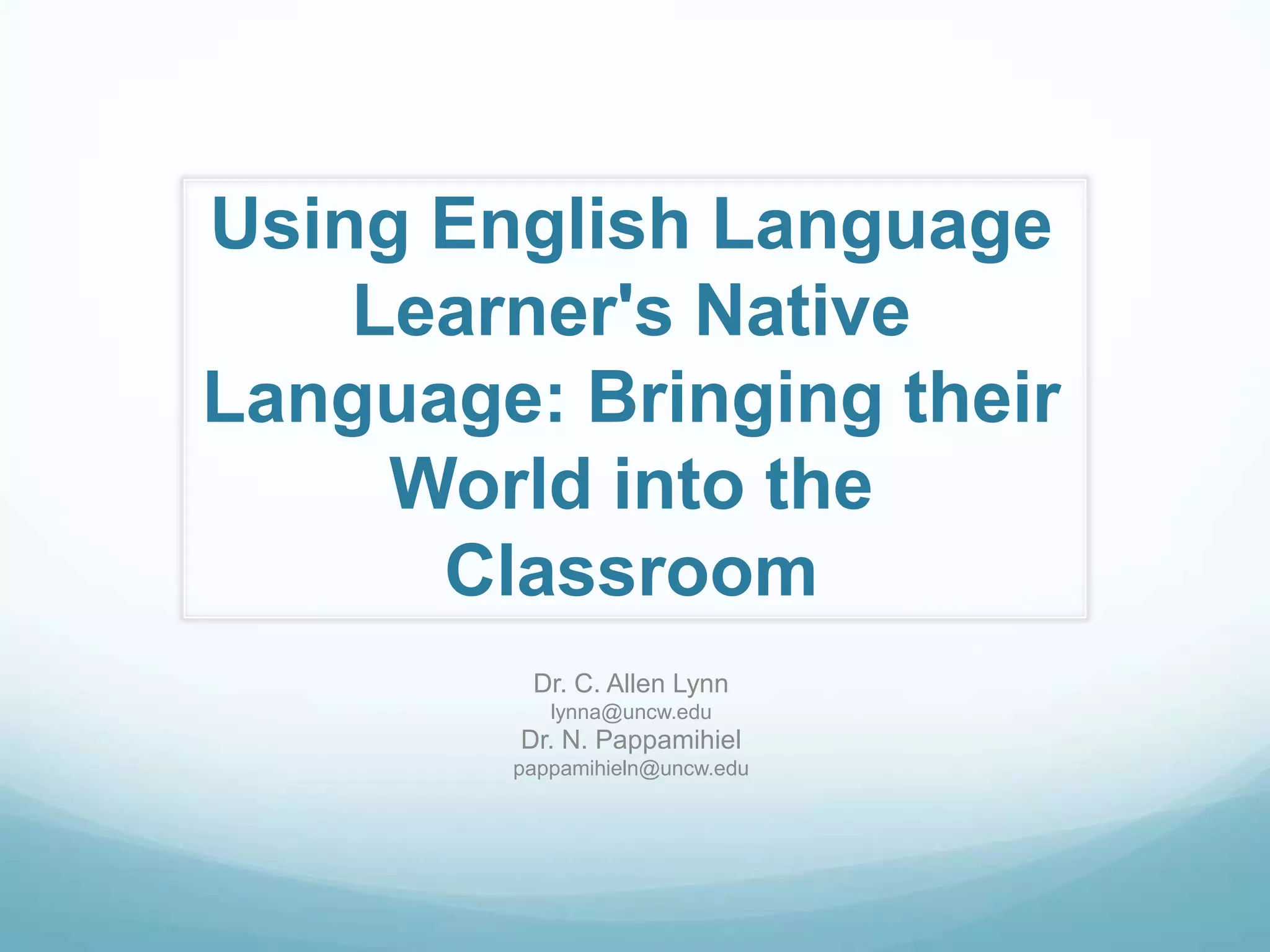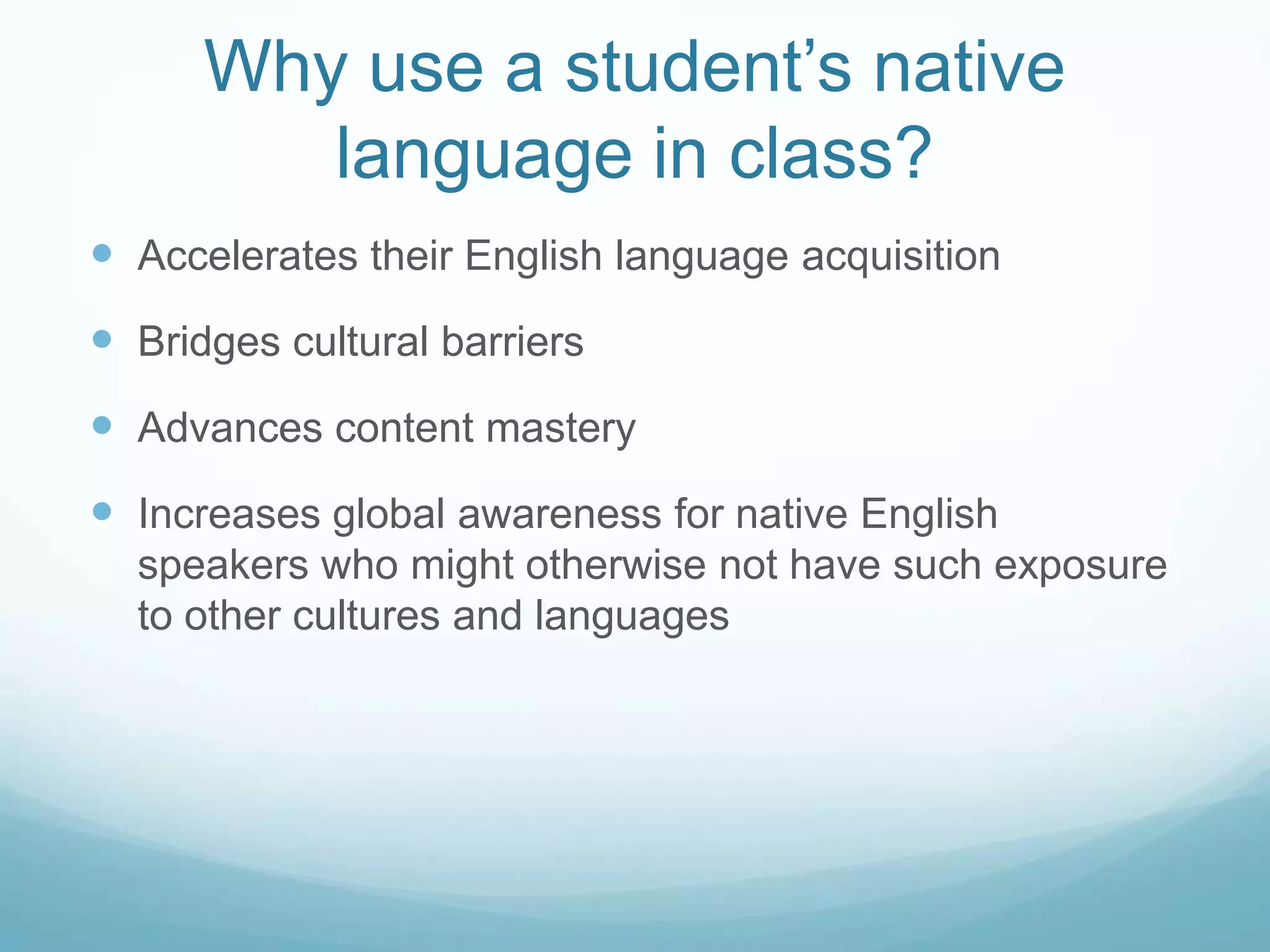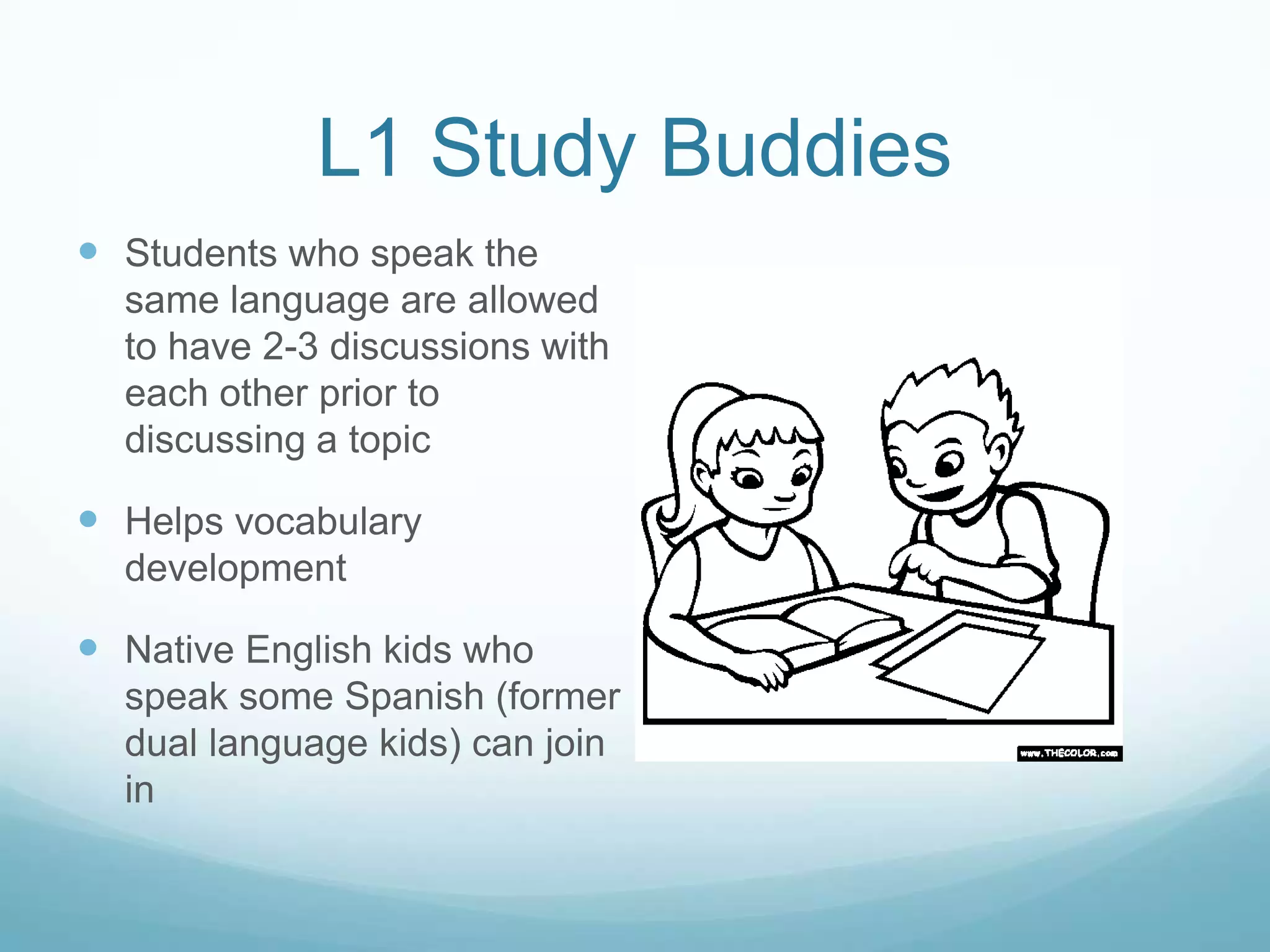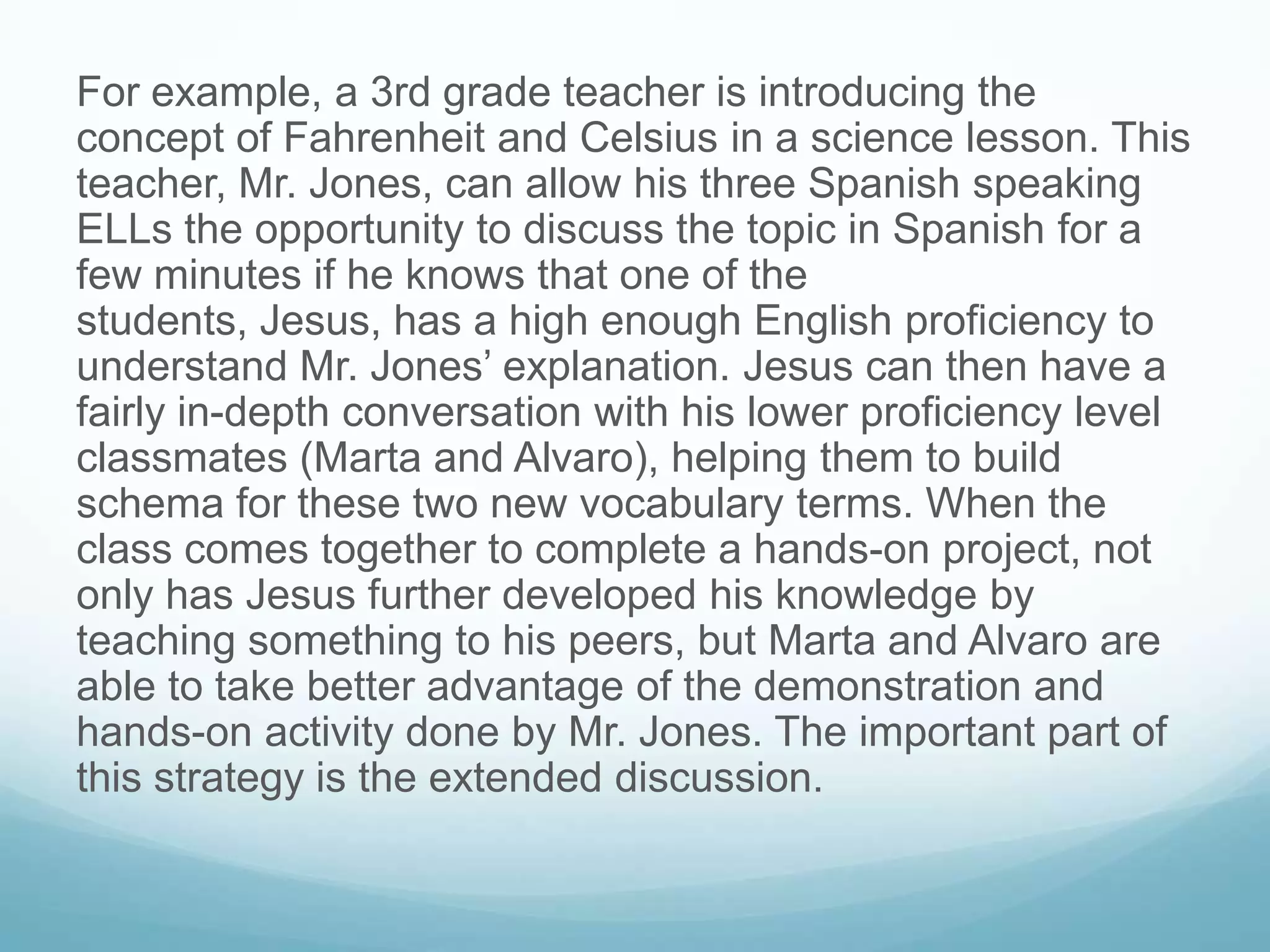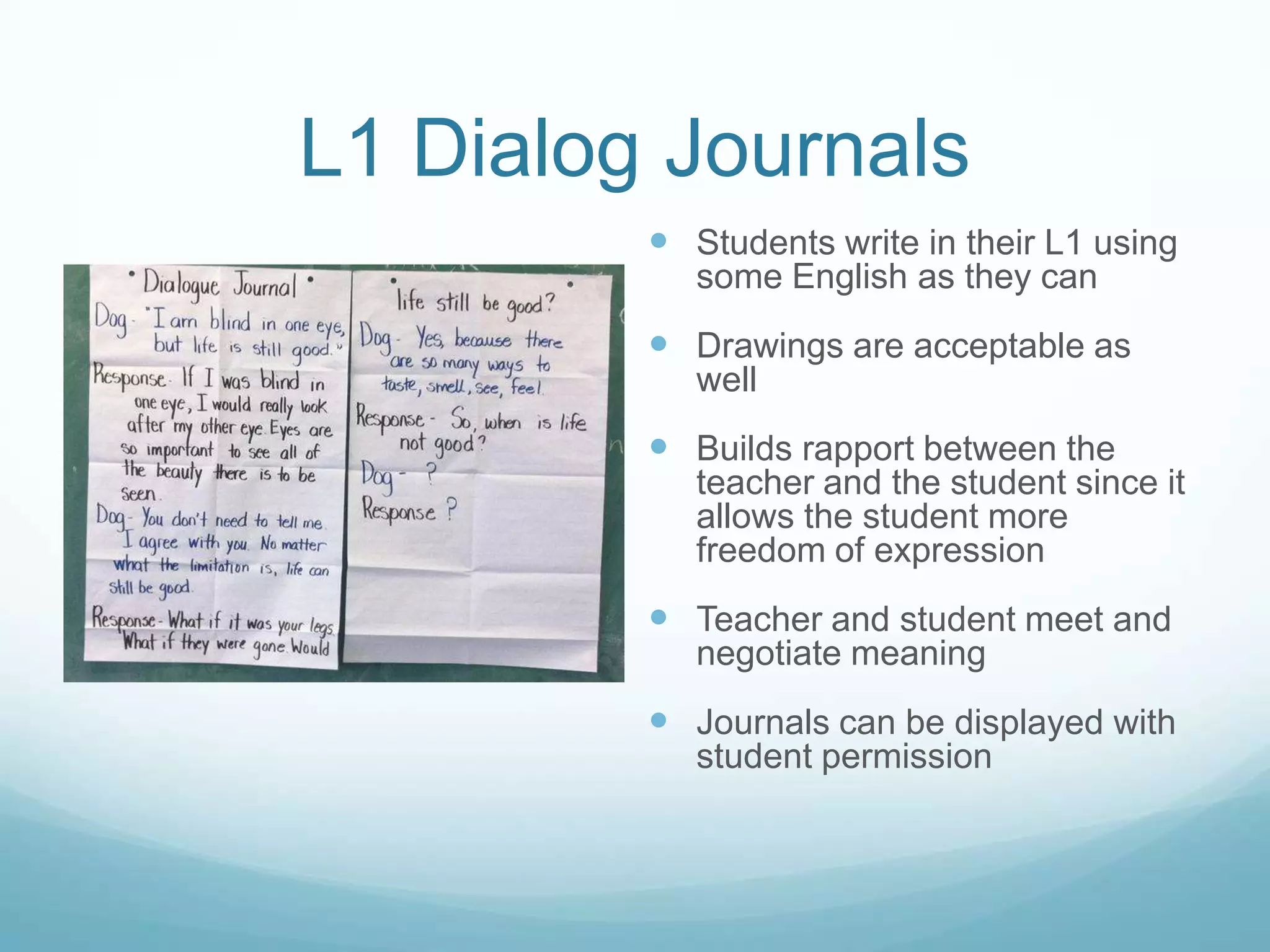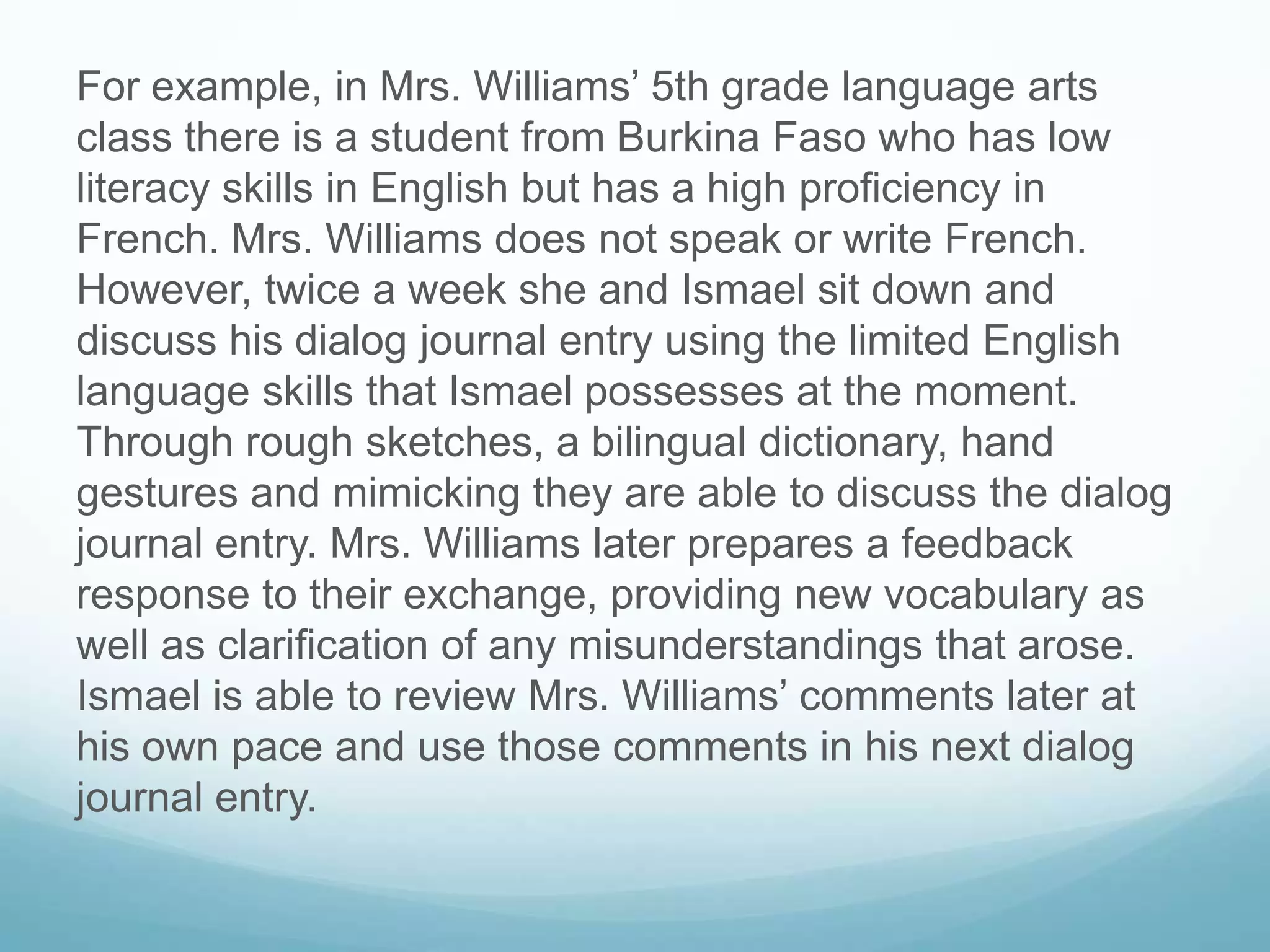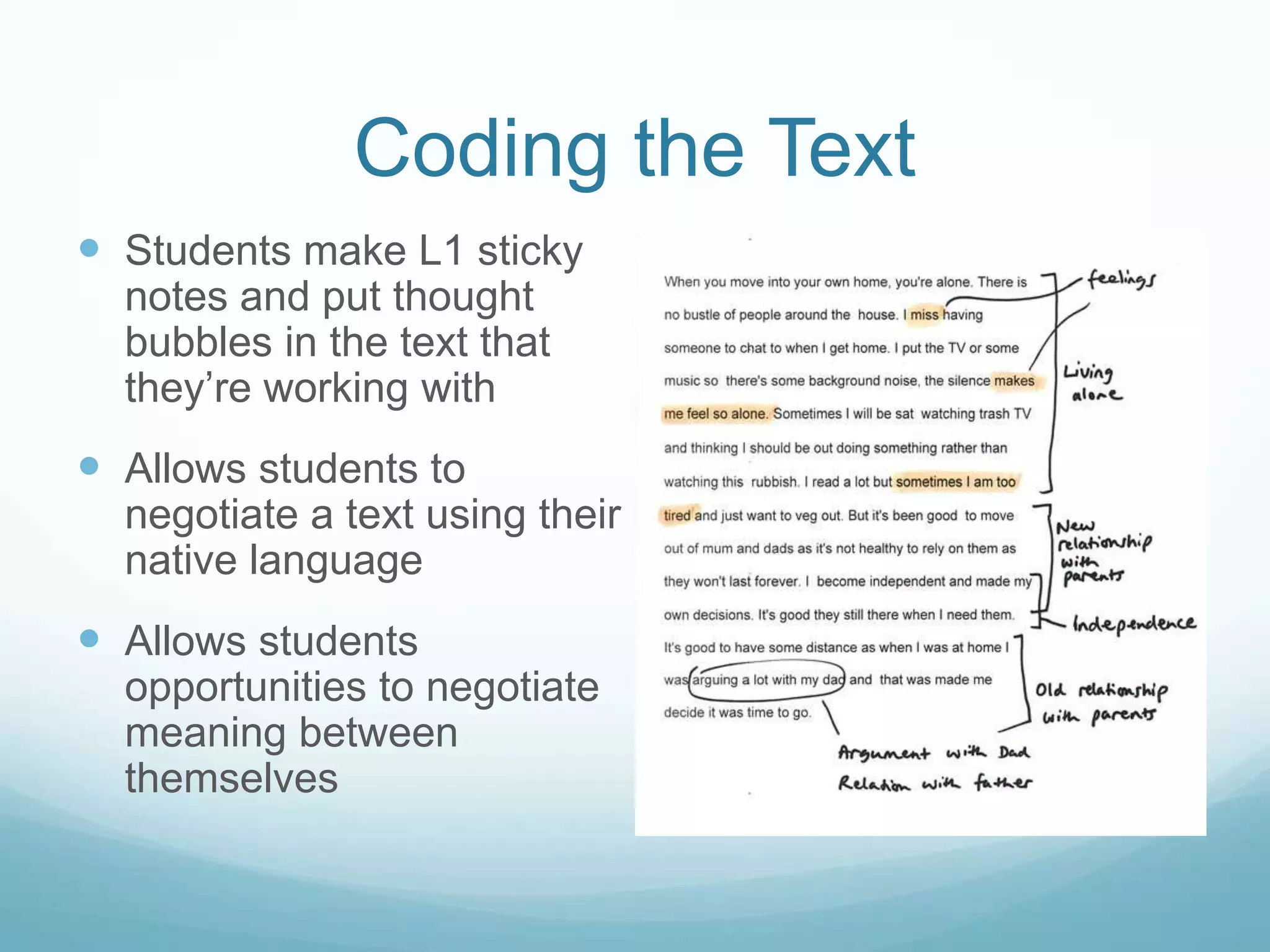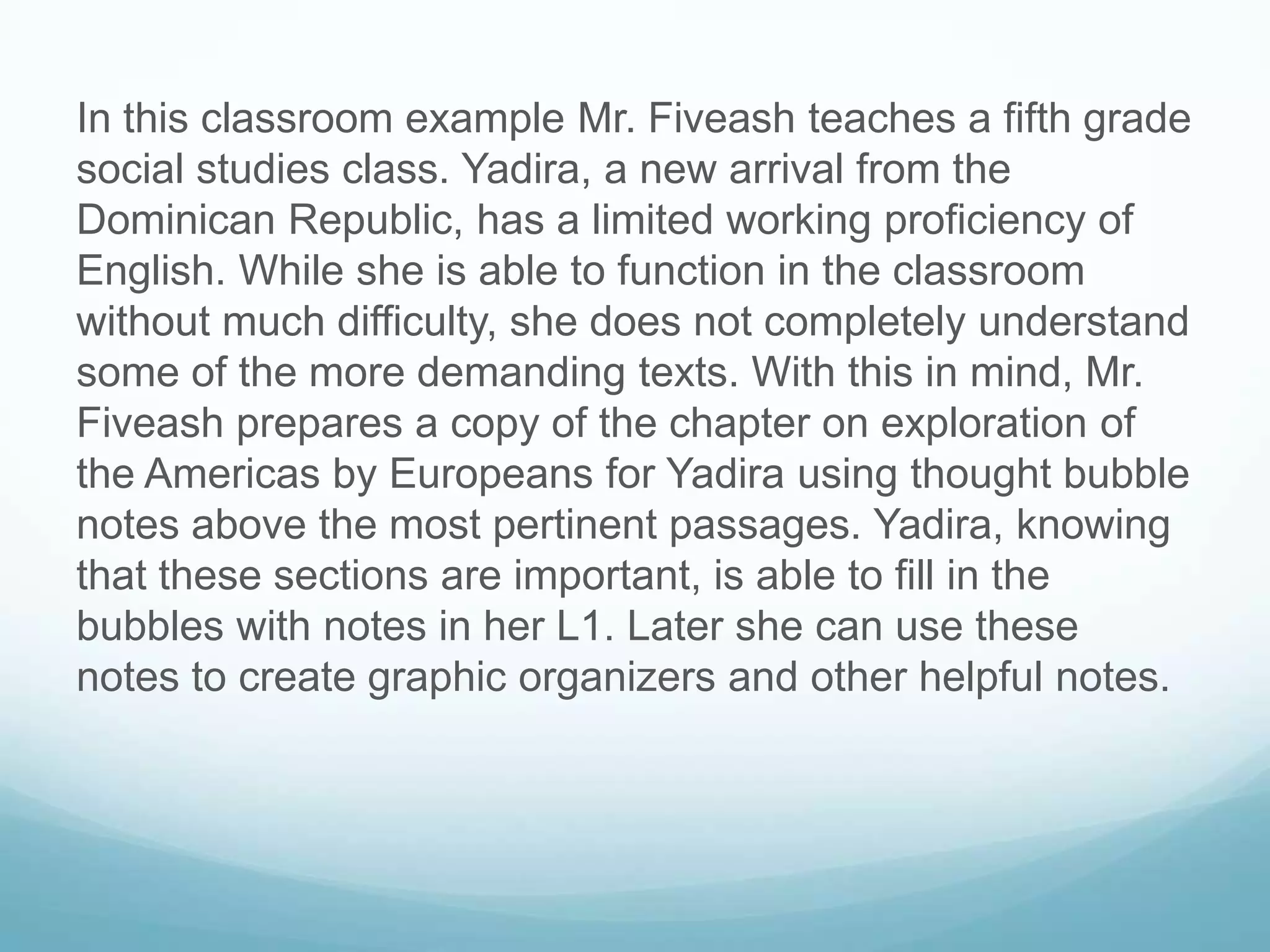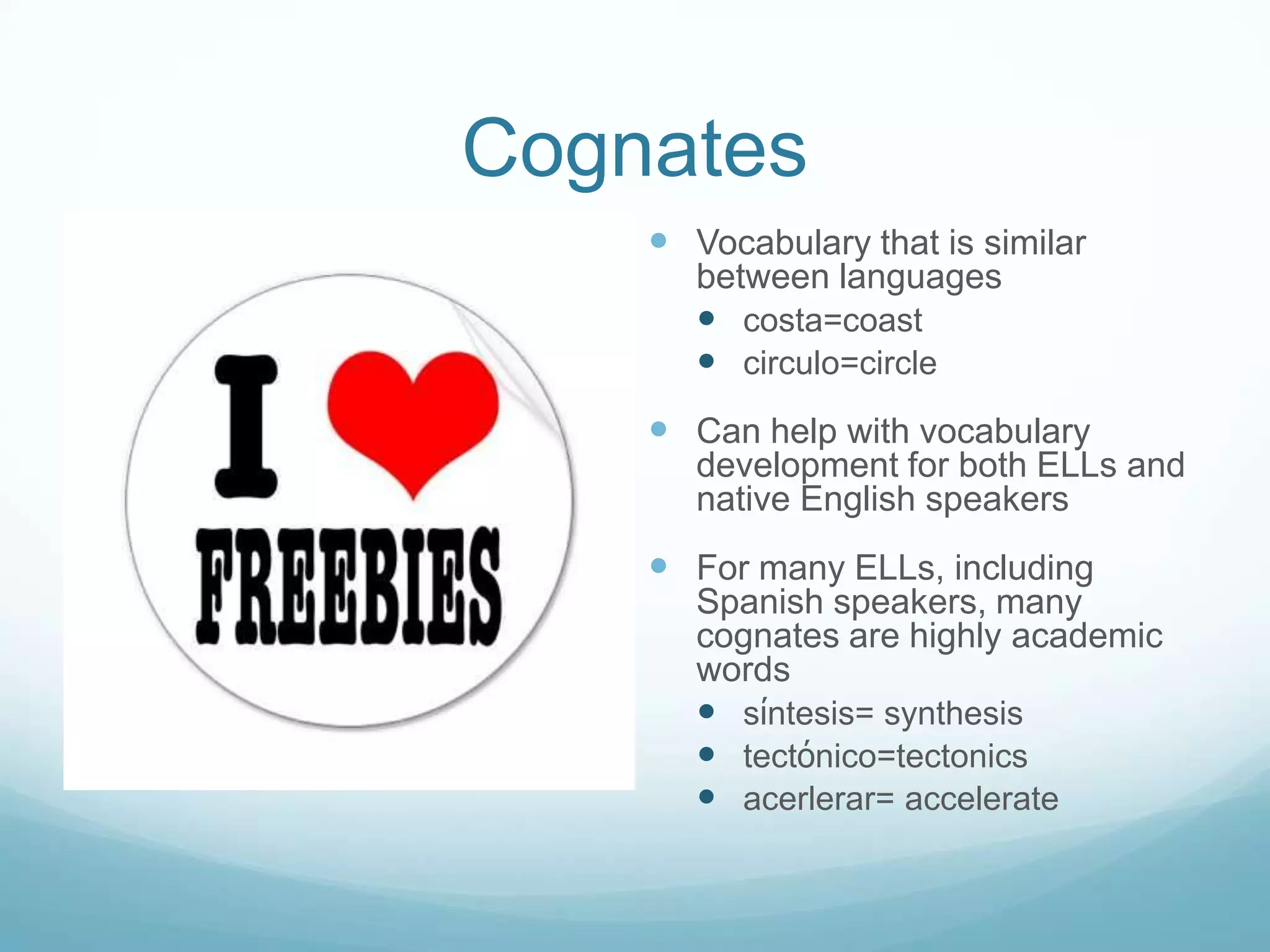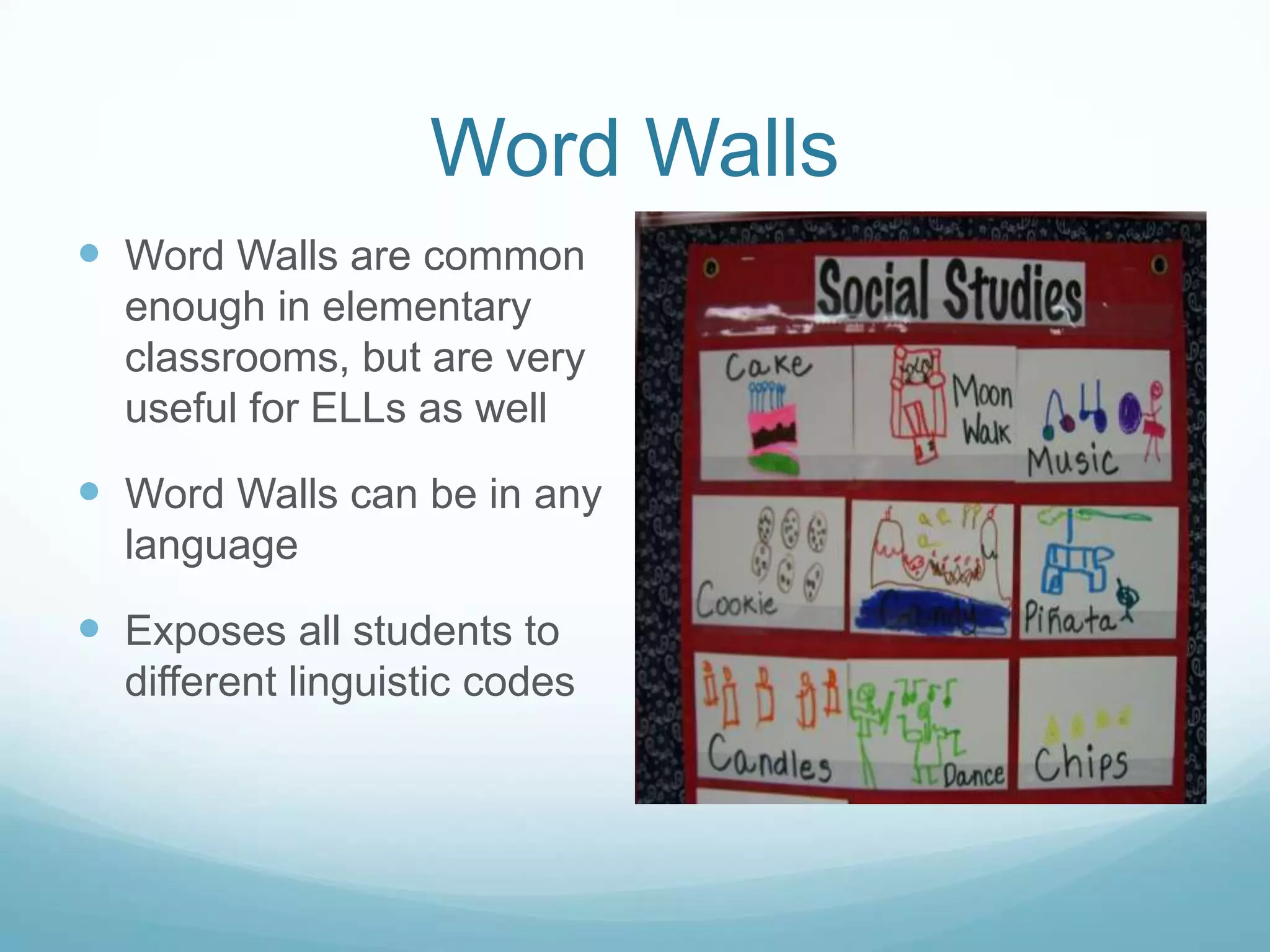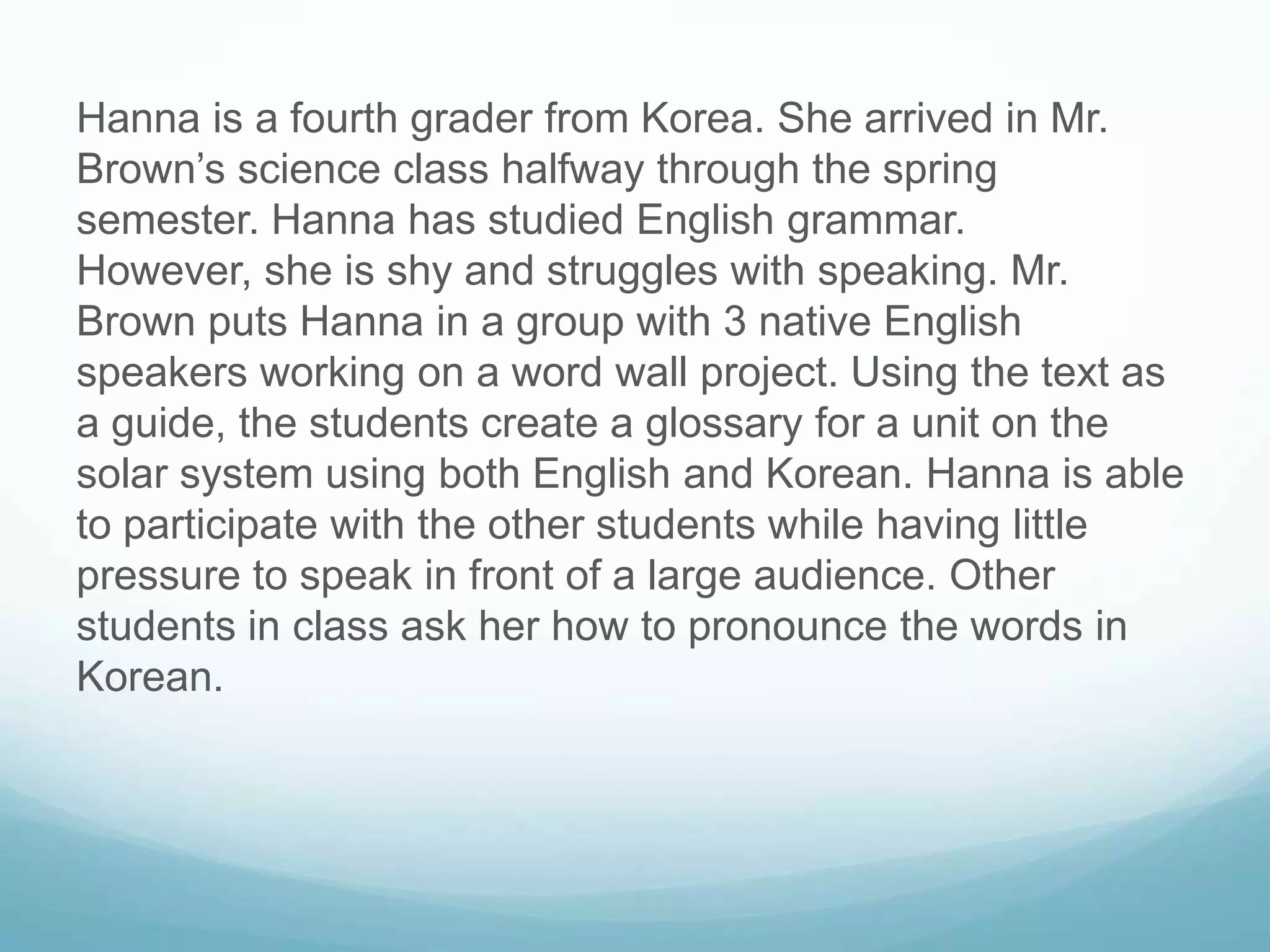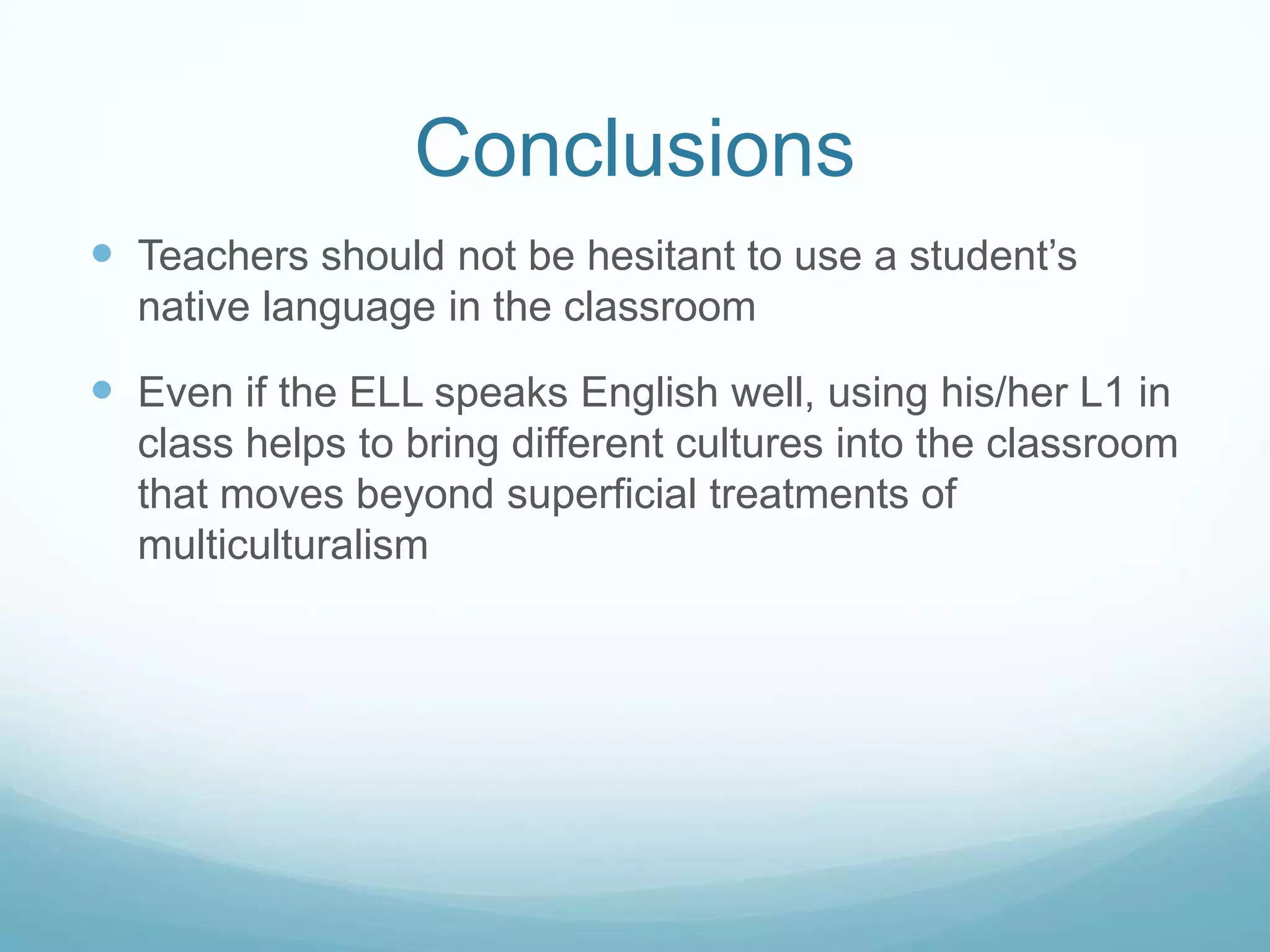This document discusses strategies for incorporating English language learners' native languages into the classroom. It describes allowing students to discuss topics in their native language before whole-class discussions to build vocabulary and schema. Other strategies include native language study buddies, dialog journals between teachers and students in the student's language, coding texts with native language notes, using cognates between English and the student's language, creating word walls with both English and the native language, and concluding that using a student's native language benefits their English acquisition and cultural understanding.
